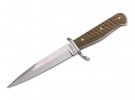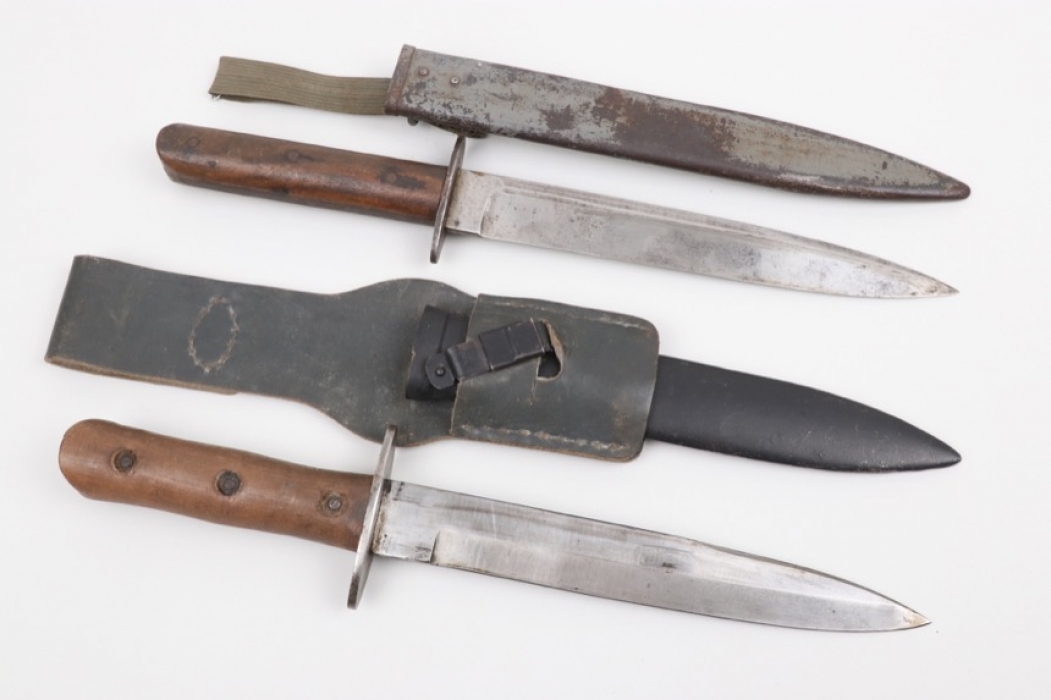- Joined
- Feb 8, 2010
- Messages
- 1,109

I recently saw this knife that has been called infanteriemesser M42 &/or Luftwaffe boot knife and the design appealed to me a lot. I got this Indian made replica not too long ago. The craftmanship is less than stellar, but it is better than the craftmanship of the dagger sitting next to it, the Fairbairn Sykes made in Sheffield, England. The FS has reached mythical status. One of the most if not the most sought after WW2 antiquities. If searched for on Ebay one will find thousands of cheaply made replicas and a few originals. Yet, the other knife, the M42 has faded into obscurity. Only known about in few collector and reenactment circles. Why is that? In my opinion the design makes for a better weapon than the Fairbairn Sykes: Easier to mass produce, stronger tip, slightly better cutting edge, better edge alignment when cutting thanks to handle shape, etc. In my view the design of the M42 is superior. Yet, it is the other knife that has survived even to modern days. The design of the FS was flawed from the start, in my opinion. And the fact that it changed several times throughout the war and then the Applegate-Fairbairn was created seem to support that opinion. Is it because of the association with the commandos? Is it because the M42 was a weapon of the enemy from our perspective? That last one is unlikely because of how popular and sought after are the H. Youth fahrtenmesser...

What do you think caused that great design to almost fade into oblivion? Do you agree with my assessment of the Fairbairn Sykes?
I recently got a copy of the book Deutsche Kampfmesser 1914-1917 by Christian Méry. There is a better version I'm trying to get which covers the period up until 1945. Honestly? From what I've seen the Germans could have been the "bad guys" in both wars but IMO they have the better knives.








